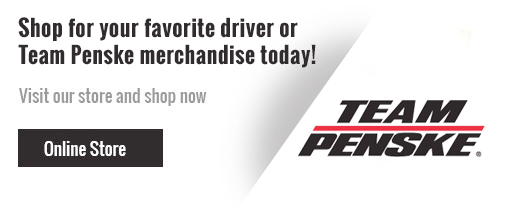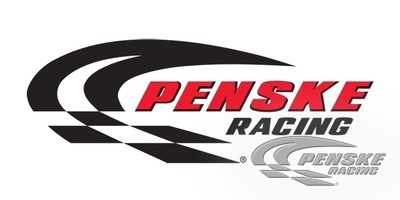Penske Racing Indianapolis 500 Press Conference
May 9, 2009
PAT SULLIVAN: Welcome, everybody. Hope we got a lot of activity like yesterday in the books today. So it should be a busy day. It's always good to have Team Penske with us. We know there's a lot of work to do, they need to get at, as well.
I'm going to begin with just a comment and just ask for an observation from Roger Penske. Roger, I may have told this story last year, and if I did, I apologize. I don't think I did. But I work out with a guy in the mornings and have for some time, and he came up to me one morning and said, "I didn't realize you were into racing as much as you are." I said, "Yeah." He said, "You might have heard of my father." I said, "Who is your father?" He said, "My father was Lou Moore." I said, "Lou Moore?" And I said, "Lou Moore was the Roger Penske of his day," and I mean that in the greatest way.
Fourteen times you've put a car in Victory Lane here in Indianapolis. I listened to Donald Davidson talking about the career of Mark Donohue earlier yesterday, and I thought about what an incredible journey it's been. I always want to know how, how do you keep doing it? How you continue to have this level of success after all these years.
ROGER PENSKE: Thank you. I think when you look back each race has its own difficulties and opportunities and thrills and, I guess, wins, but we put that behind us and we focus each year, you know, on winning this race. We know what it takes. We understand the type of preparation; we understand the reliability. But more important, it's the teamwork. I think when you look at this year's group of employees, team members we have here, we probably have 6- or 700 years of experience at this racetrack with this team.
When you look at the driver lineup, obviously, you know, Helio has two wins, is really back on his game. He was out for a while, obviously, the team stood by him 100 percent. Will took a risk with us, that he knew that maybe he'd have a ride one race and maybe none at all. But as it's turned out, he gave us a terrific response at Long Beach and then obviously has a chance to run here on the team for this year's Indy 500. I know there will be a question about what's his future, and I think I've told him, I said, "Let's get through the Indianapolis 500, then we'll determine where we go next." But I want to thank him for what he's done. And obviously the team of guys working on his car are the same guys that are running that, the Grand-Am car we have in the series with the Porsche-powered Riley. Of course, Ryan got off to a great start winning the first race; I think he's one point out of the lead right now. So we think we're in pretty good shape. Experience, Ryan has more confidence this year. It's his third year with us here at the Speedway. To me, we've got drivers that can win the race. Strategy-wise, Tim has probably the best record and knows exactly how we need to call these races.
So, you know, the combined knowledge is many years of experience. But it's going to be close; there's lots of good cars. The Ganassi team is always the one that we have to focus on, but the Andretti team looks very strong, they have in the first few races. So there's 10 or 12 cars and, depending on fuel stops and the way it ends up, there's a lot of potential winners here. So we're just glad to be here. I can tell you that we're as focused this year as we've ever been.
SULLIVAN: It sure looks like it. We've got veterans here, but obviously we have Helio Castroneves, Ryan Briscoe and Will Power. Delighted to have Will with us in the Indy Racing League, IndyCar Series last year. It's just wonderful to have him with us. When I think about great teams, a lot of it has to do with continuity. You have the president of Penske Racing, Tim Cindric, and then how would you like to be a driver and turn to this guy for some advice once in a while, four-time winner, Rick Mears.
Let's open it up to questions right off the bat. I'd like to repeat the question, as well, we have a transcription being done. Don't be shy.
Q: For Tim, when you run the program here in Indy, particularly, this is obviously a big effort for you guys, three-car effort. How much focus do you put just on this race as opposed to the rest of the season?
SULLIVAN: Tim, we're good, let's go ahead.
TIM CINDRIC: We start preparing for this race when last year ends. We felt like last year maybe we missed a step, you know, and we felt like we certainly needed to be better for this year. Whether it's one car, two cars or three cars, we obviously work together as a team. But everything that we've done throughout the offseason, throughout last year, is completely focused on what happens here. The other races, there's some effects, some races there's not. We told Helio when he took his vacation there, we were still working hard here. When he showed up, it would be ready for him, and I think yesterday showed that we were ready.
SULLIVAN: Next question.
Q: Roger, the economy seems to have been on the NASCAR side harder than here at least in terms of guys getting laid off and teams folding and things like that. Is that just a by-product of this series being lean?
PENSKE: I take my hat off to the IRL because our costs to run this series is probably a third of what it costs to run an up-front NASCAR team this year. The cars are the same. We've got a great engine program with Honda. There's parts available, there's a used car market so people will buy your older cars and they can compete with them, you know, at the highest level. So I think the number of races, 16, 17, is where we need to be. Obviously, there's pressure on sponsors. We all have that, but the combination of the two leagues when you think about it, we'd be talking here two or three years ago, are we going to have six or eight guys show up on the second weekend to try to get 33 cars. We've got good teams out here, you just look at the equipment, lots of new drivers, teams that have moved up. I'm really thrilled to see that.
I would say the costs, anything that was going to add cost to this series, Brian Barnhart and his team have pretty much wiped out, which is good. So it's a level playing field, it's going to be strategy, it's going to be driver capability and a little bit of luck thrown in. So I think the cost here is really in good shape and we can continue, and you'll see more people go forward.
I would say an average team today can get in this probably for, to run the season in the 4- to $5 million range and to run up front in NASCAR it's probably 20.
Q: Rick, when you came here 31 years ago, whatever it was, is it pretty similar today, their preparation as it was when you came here?
RICK MEARS: Well, I mean, it's similar, but it's not. You mean as far as what we do today in comparison to what we did back then? The preparation with the Penske team has always been the best it can be. That's what you try to do, to make it the best it can be. And I think probably the only differences today is the fact that what we've learned. You just try to keep going forward, making new steps, making changes to make it better. But the intensity level, that kind of thing as far as effort to get the job done, is really not that much different than it was back then. It was still as high as it could be because that's what you have to do to be able to run up front.
PENSKE: I think to add on that, the good news here is we've shortened up the month. When we came here back in the '70s, we started May 1st and we ran for 26 or 27 days every day, tires, cars, you had more accidents. There's a high risk factor. I was talking to Mario about it this past weekend, he said, "The more you run here, the higher the risk factor goes." So that's been a cost savings, that's a big difference. You have to be ready.
Many teams came here and started putting their cars together at the track

